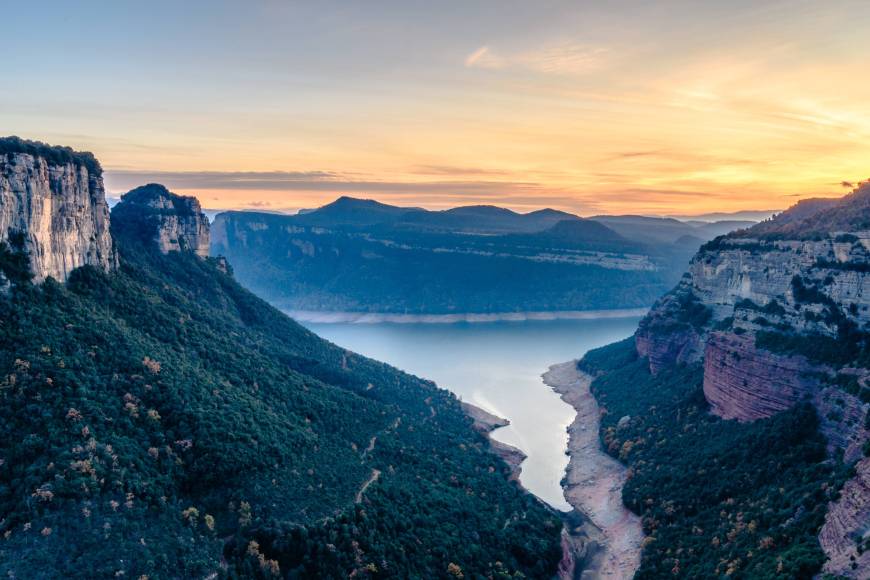The Sau Reservoir is not just that iconic image of the bell tower peeking out from murky waters. It's adventure, nature, mystery and a window to a submerged past (literally). It's one of those places that makes you forget you have a phone, pending emails or WhatsApp groups full of memes. Located in the heart of Osona and surrounded by imposing cliffs and forests that seem painted, it's an ideal destination for weekend getaways, improvised routes and those moments when you just want to breathe pure air and listen to the sound of silence.
Water activities at the Sau Reservoir
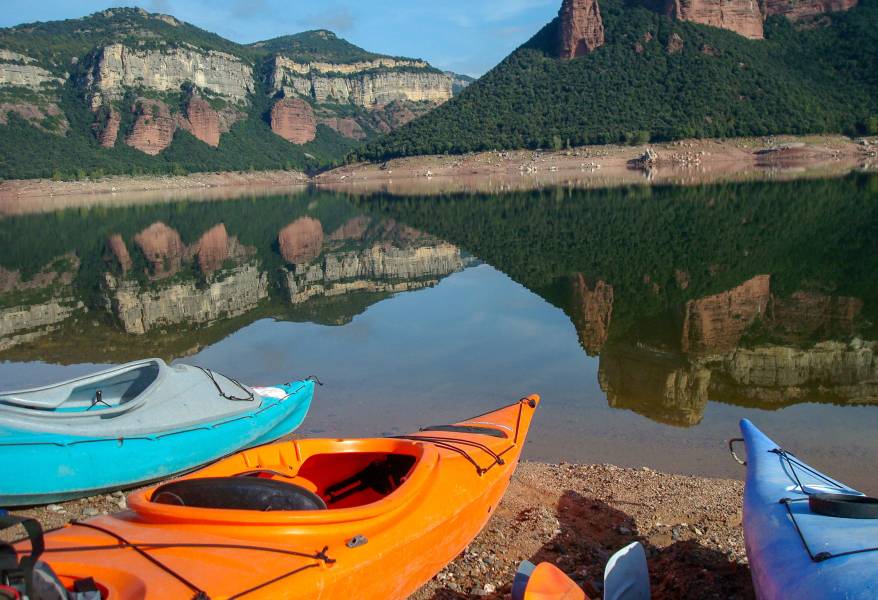
The true gem of the reservoir, beyond the postcard view of the Sant Romà bell tower, is the chance to experience it from within. Literally. Paddling through the lake feels like entering a parallel world where time goes slower, and the only thing you hear is the "swoosh" of the paddle in the water. You can rent a kayak and explore the calm meanders while gazing at the Collsacabra cliffs in the distance. If you've got more balance than haste, paddle surfing is another fun and surprisingly zen option. Additionally, local companies also offer outings with aquaslider, a lightweight boat for 2, 3, or 4 people, perfect for the whole family.
Hiking around the Sau Reservoir
If you're more into hiking boots than swimsuits, you're also in the right place. The surroundings of the reservoir are crossed by a network of hiking trails suitable for all levels. From gentle walks by the water to challenging trips that take you to viewpoints from where the landscape unfolds like a never-ending postcard.
One highly recommended route is the one that goes to the Monastery of Sant Pere de Casserres, a spectacular Romanesque complex that overlooks a natural peninsula above the reservoir and one of the monasteries in Catalonia that you cannot miss. The path is easy, very well signposted and with views that make you stop every two minutes to take pictures. You can also go up to Tavertet, one of the most beautiful towns in Catalonia, surrounded by vertiginous cliffs. From the viewing point, the Pantà de Sau looks like an impressionist painting. For the bravest, we recommend the routes through the Serra de les Guilleries or the paths that connect with the Jump of la Minyona. Indeed: Here the GPS won't always help you, but the explorer instinct (or Wikiloc) will.
Climbing at Sau Reservoir
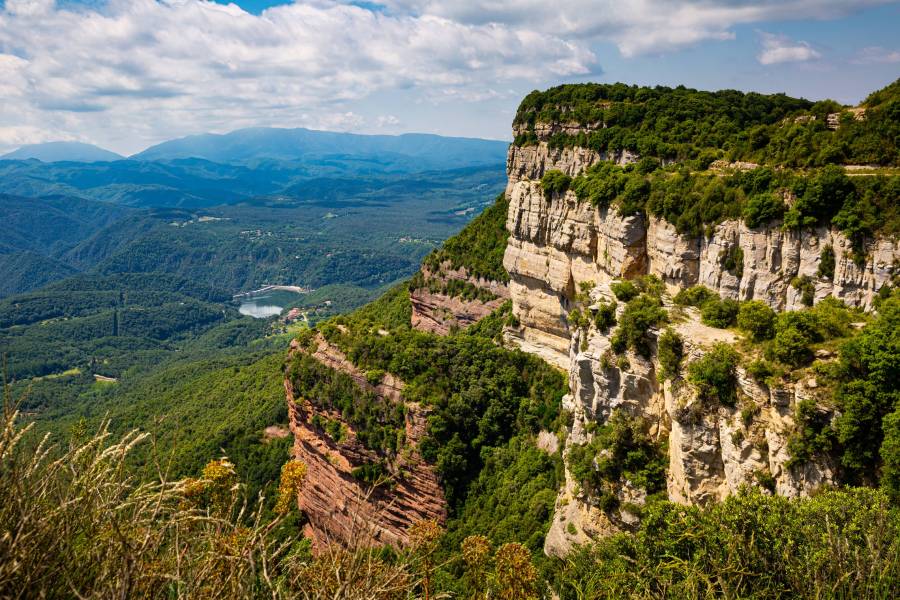
If you like climbing, grab your phone and note this down: Les Cingleres del Collsacabra are a must among climbers: imposing walls, quality rock and jaw-dropping views. Areas such as Tavertet or the Morro de l'Abella offer routes for intermediate and advanced levels, ideal for those looking for a bit more excitement and pure nature. Now, if you're more into carabiners and cables than climbing shoes, note down the Via Ferrata de les Baumes Corcades, in Centelles. It's not right next to the reservoir, but it's less than an hour away and is absolutely worth it.
Bike routes around the Sau Reservoir
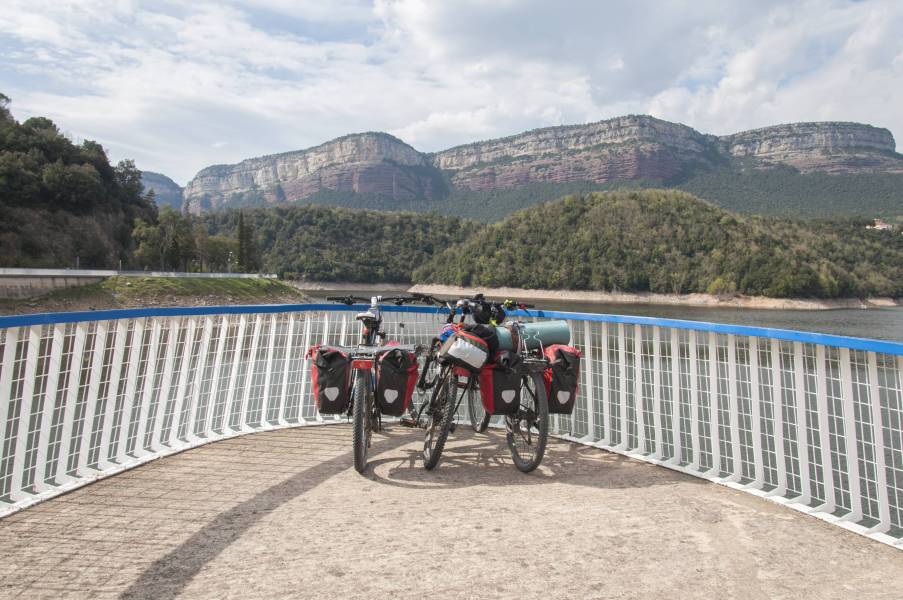
Mountain bike enthusiasts will also find their space. At the Sau Reservoir, you will find MTB trails that wind between forests, forgotten hermitages and vertigo-inducing viewpoints. The incline can be challenging in some, but the views and tranquility make up for each pedal stroke. If you prefer a slower pace, there are also options for gravel or electric bike rides, especially around Vilanova de Sau and the tracks that surround the reservoir.
The landscapes of Sau Reservoir: Wildlife, tranquility and silence
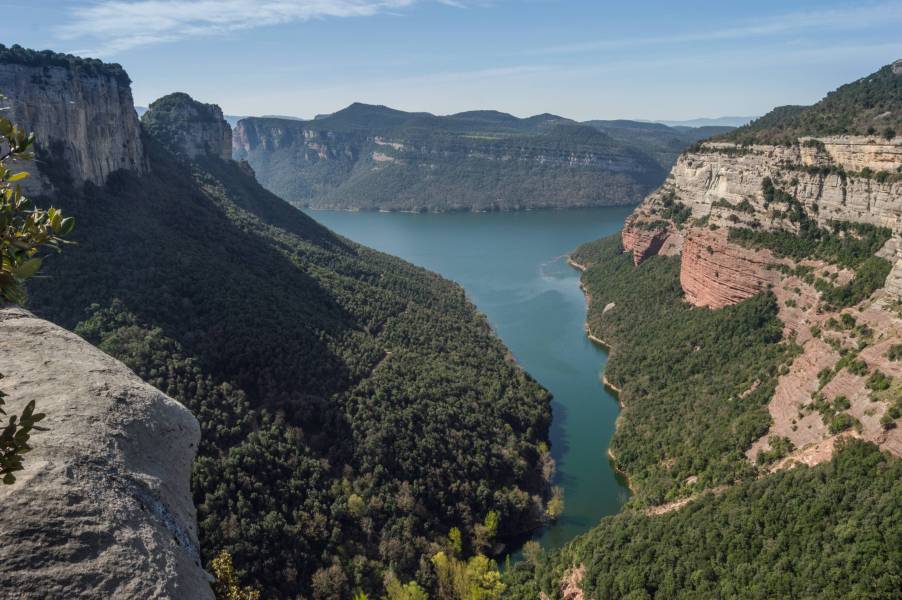
The silence of the reservoir also invites quiet observation. At the crack of dawn or towards dusk, it's easy to spot waterbirds, deers, wild boars, and, with luck, plovers or a booted eagles. Don't forget your binoculars, a good dose of patience, and prepare to enjoy the best live nature documentary. Additionally, there are areas equipped for a picnic with tables and shade, perfectly suitable for recovering after a good route or for a relaxed break.
Sant Romà de Sau, the submerged village
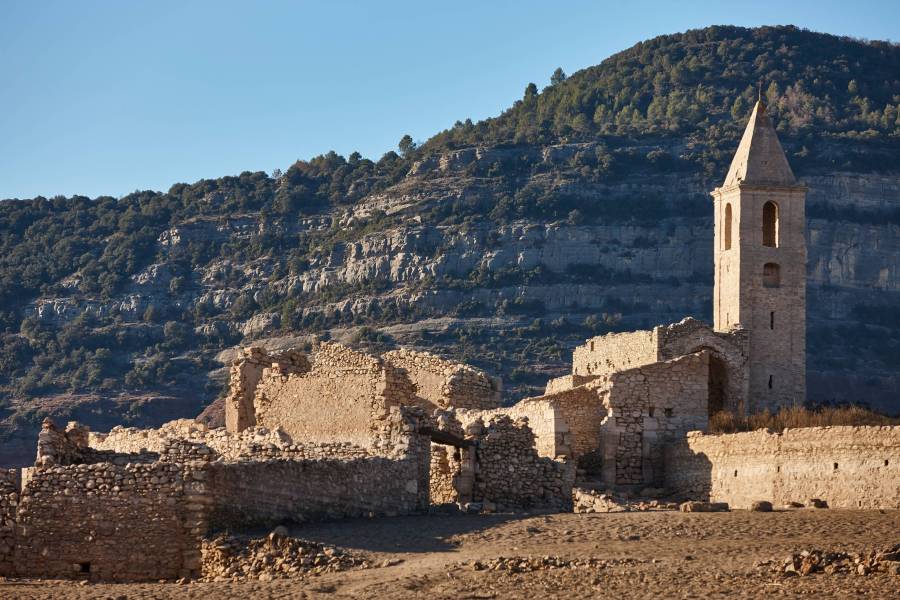
The story of Sau reservoir is worthy of a novel. In the 1940s, the small village of Sant Romà de Sau, with only 100 inhabitants, was evacuated to build a dam to guarantee the water supply to Barcelona and other points in Girona and l'Empordà. The villagers left for neighboring towns, like Vilanova de Sau, leaving behind houses, lands, and memories. When the works finished in the mid-sixties giving birth to the Sau reservoir, the waters began to fill the valley and ended up completely covering the old village. Today, when the water level decreases and drought strikes, we can still see (and photograph!) the Romanesque church of Sant Romà emerging from the waters, a silent witness of what was once a town. Over the years, the reservoir has become a symbol of collective memory that rarely appears in history books, but also a natural and touristic site of great landscape value.
The Sau Reservoir is not just a place to spend the day. It is a territory to discover slowly. In the water, the forest, the rocks and even under the surface there are stories waiting to be heard. It is the ideal place to reconnect with nature and a rural, authentic Catalonia, that kind which does not appear in quick guides. So, now you know! Look for the best country house in the area, pack your suitcase and discover the Sau Reservoir.
 Log in to your account
Log in to your account